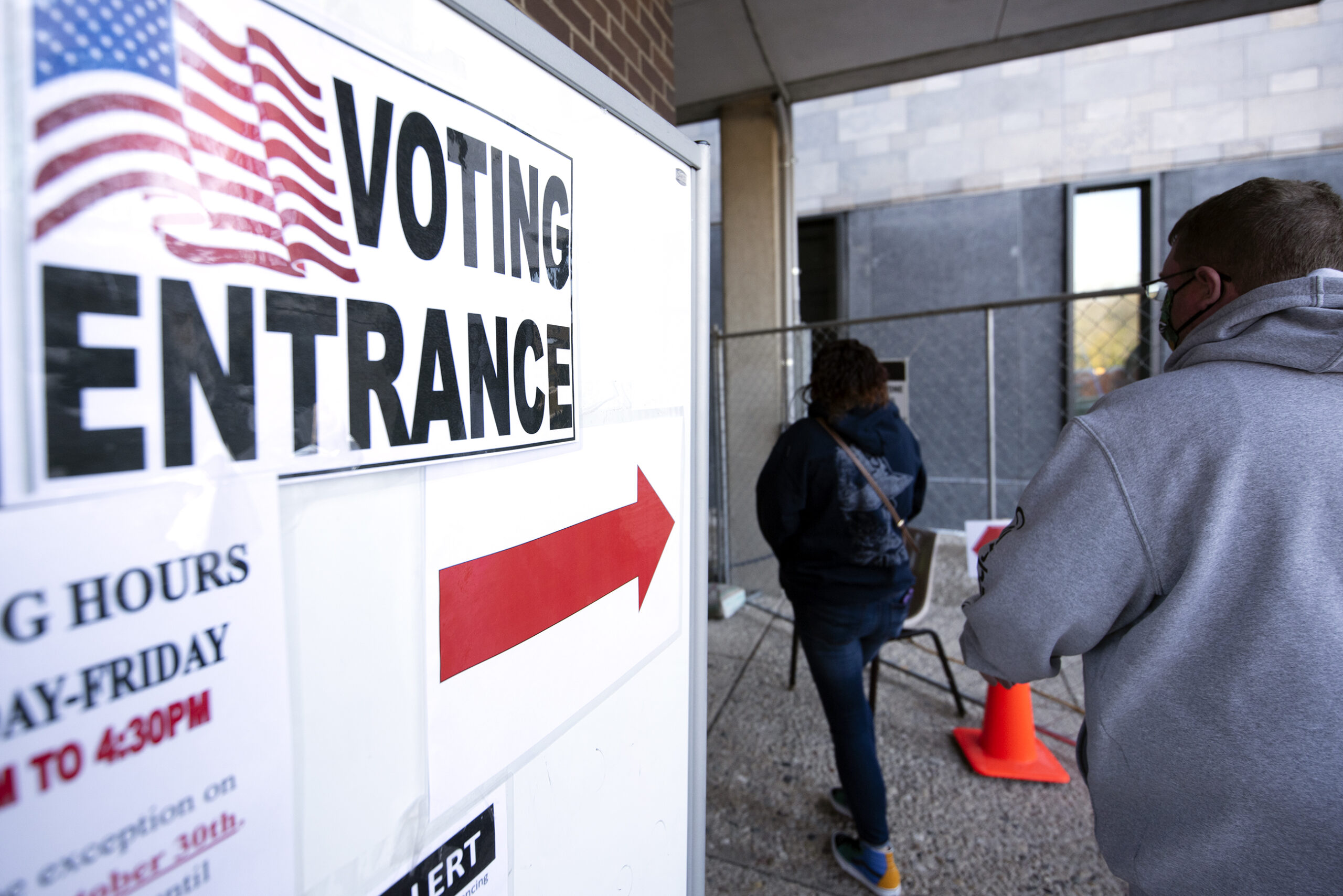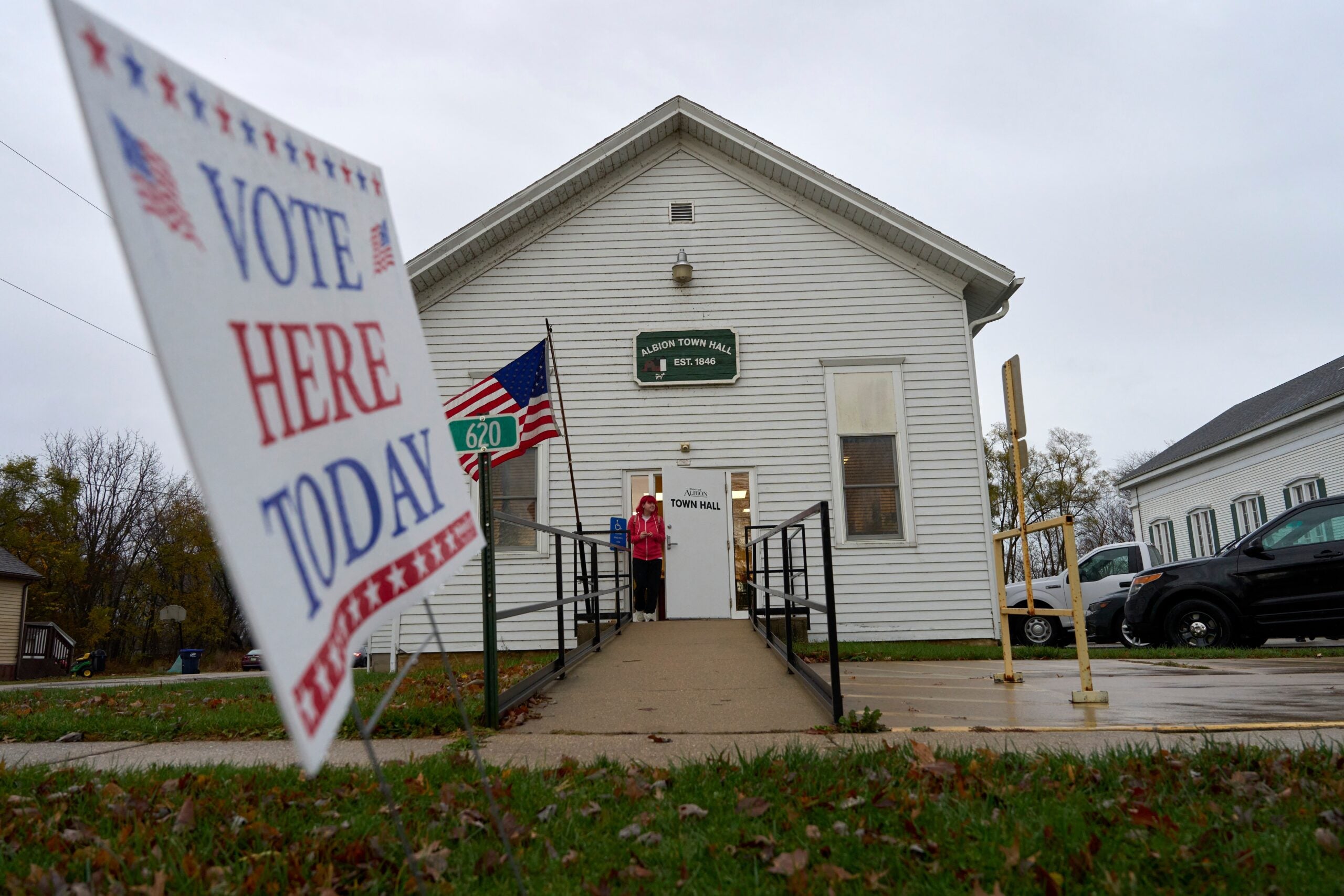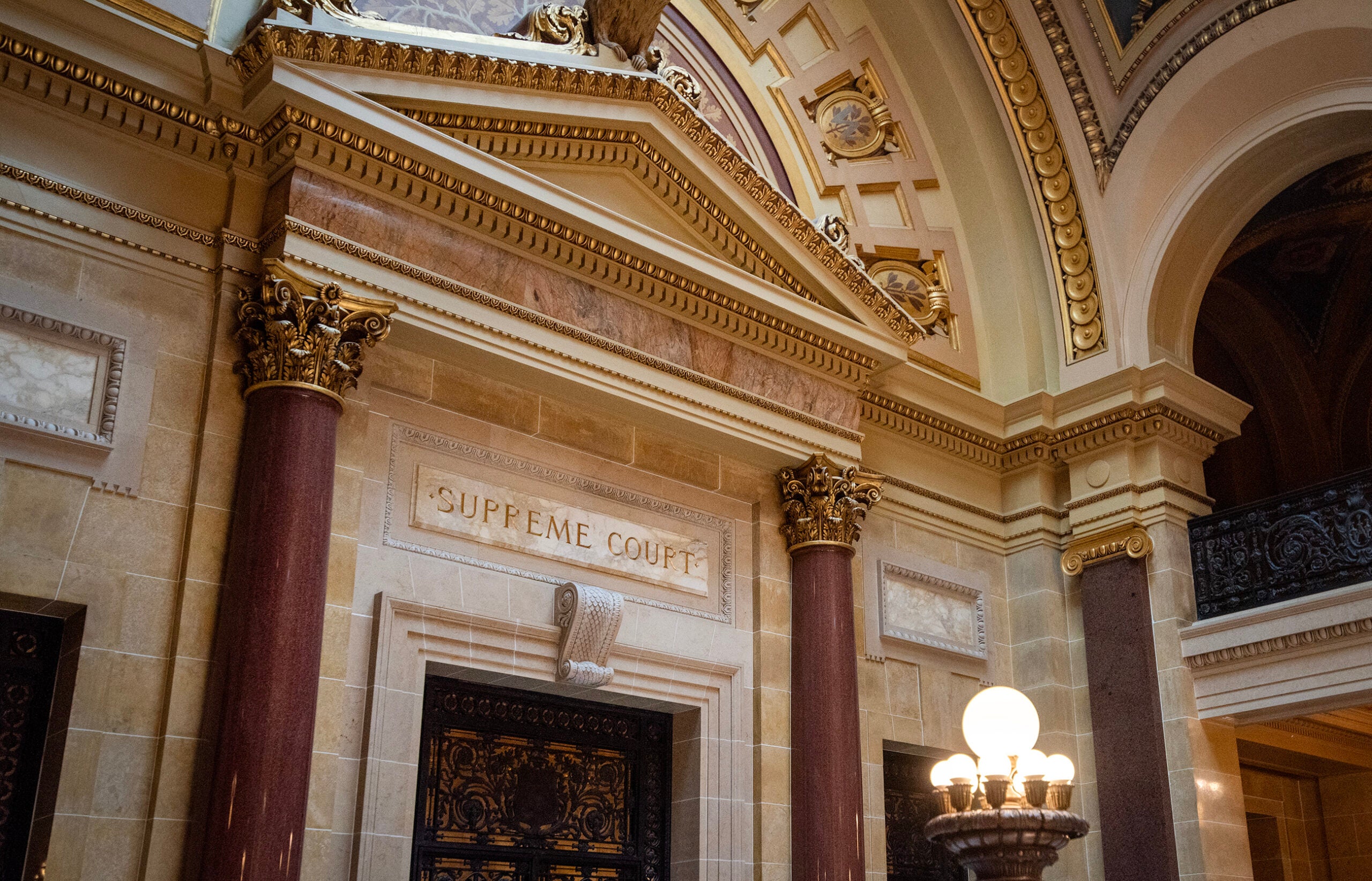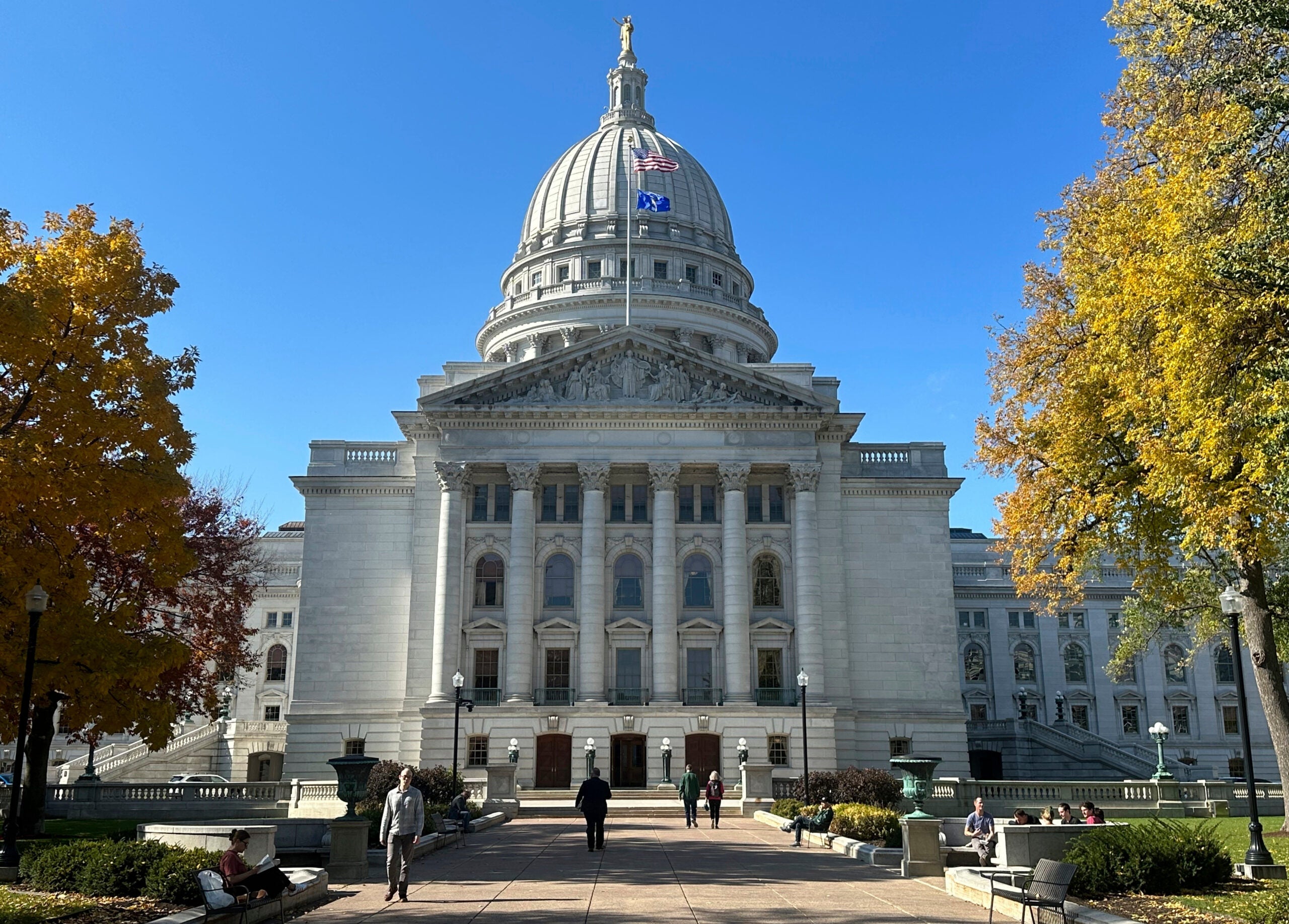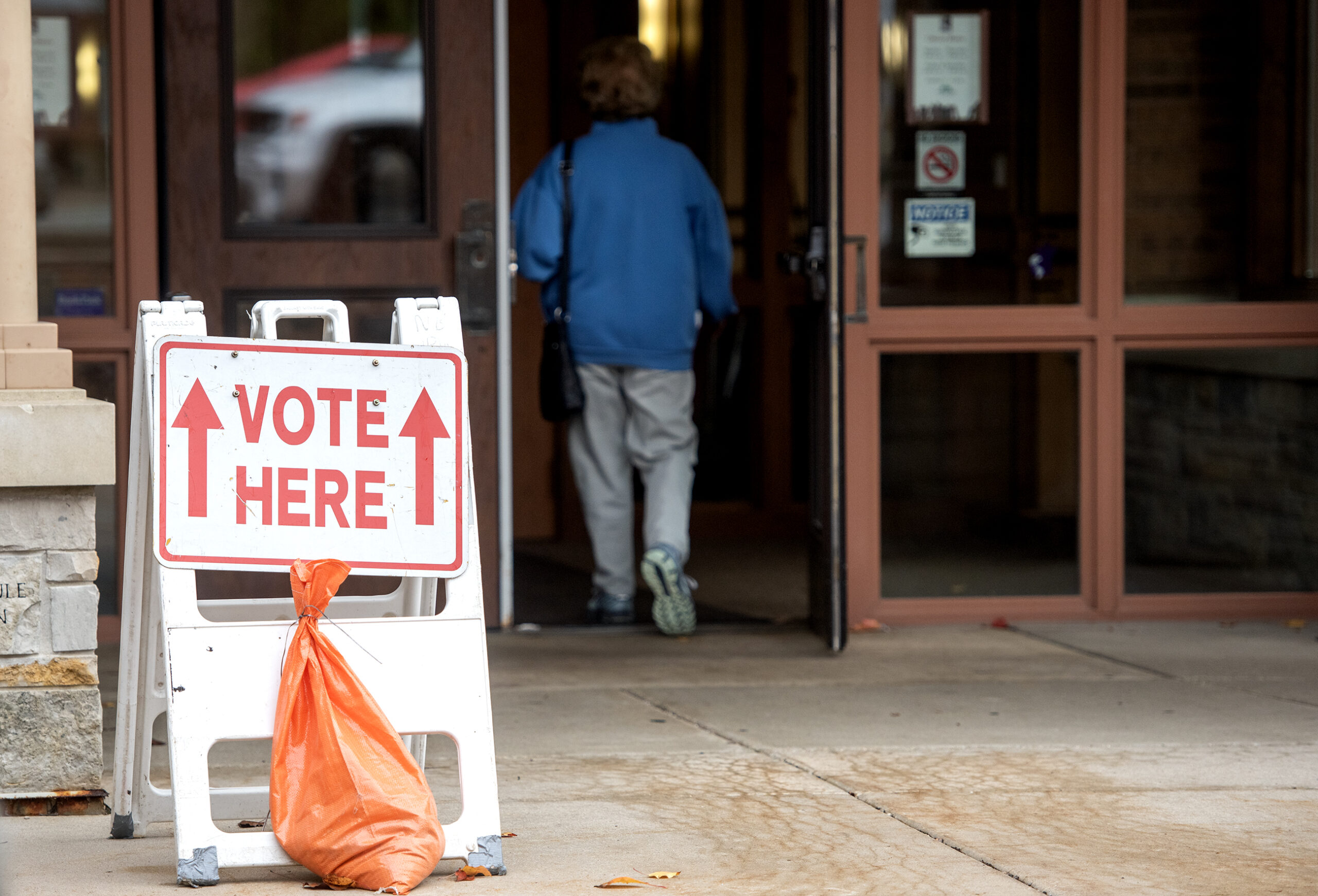A drawn-out legal fight over Wisconsin’s voter list ended Friday when the state Supreme Court rejected a lawsuit filed by a conservative group seeking to purge thousands of names from Wisconsin’s voter list.
The conservative Wisconsin Institute for Law and Liberty (WILL) filed the lawsuit in 2019. It argued that it was the Wisconsin Elections Commission’s legal duty to remove the names from a list of voters flagged as having potentially moved by a multi-state database of government records.
But in a majority opinion authored by conservative swing Justice Brian Hagedorn, the court ruled 5-2 Friday that it wasn’t the state’s job to remove the names. Hagedorn said the law in question didn’t apply to the Wisconsin Elections Commission.
News with a little more humanity
WPR’s “Wisconsin Today” newsletter keeps you connected to the state you love without feeling overwhelmed. No paywall. No agenda. No corporate filter.
“There is no credible argument that it does,” Hagedorn wrote.
The ruling means about 69,000 names that were flagged will remain on the state’s voter list for now.
Hagedorn’s majority opinion was joined by conservative Chief Justice Patience Roggensack, as well as Justices Ann Walsh Bradley, Rebecca Dallet and Jill Karofsky, the court’s three liberals. Conservative Justices Rebecca Bradley and Annette Ziegler dissented.
The dispute over the voter list began in June 2019, when the Wisconsin Elections Commission decided how it would handle thousands of voters who were flagged as having potentially moved.
The names in question were identified by a multi-state database of government records known as the Electronic Registration Information Center (ERIC). The database pulls addresses from a variety of sources, such as state departments of motor vehicles and a National Change of Address list maintained by the U.S. Postal Service.
After the list flagged 232,579 voters as having potentially moved, the state sent out mailers to the addresses where they were registered. The Elections Commission’s initial plan was to give those voters a chance to update their addresses. Those who didn’t respond would be asked when they voted whether they still lived at their address or if they had moved.
But WILL sued in November 2019, arguing that state law required the Elections Commission to purge its voter list 30 days after the mailing was sent.
WILL filed its case in Ozaukee County and won the first round in dramatic fashion when circuit court Judge Paul Malloy ruled from the bench that the names must be purged from the voter list immediately.
After the bipartisan Wisconsin Elections Commission split 3-3 on how to address the ruling, Malloy took the rare step of finding the panel’s three Democratic members in contempt of court. Malloy’s order would have fined Democrats Ann Jacobs, Mark Thomsen and Julie Glancey $250 each per day until the names were removed from Wisconsin’s voter list. He also ordered a $50 daily fine for the Elections Commission itself.
A Wisconsin Appeals Court blocked Malloy’s ruling and his contempt order, eventually ruling against WILL and in favor of the Elections Commission.
WILL asked the Wisconsin Supreme Court to hear the voter purge lawsuit in an expedited appeal, but the court denied the request in a January 2020 ruling where Hagedorn joined the court’s liberals. The state Supreme Court rejected another attempt by WILL to expedite the case in July 2020, with Hagedorn again joining the court’s liberal block.
That meant the case had to play out through the usual judicial process, which — in this case — proceeded much slower. Justices heard arguments in September, but the case was put on the back-burner during the 2020 U.S. presidential election season, where other conservative groups and former President Donald Trump’s campaign filed far-reaching lawsuits that would have overturned the results of the election itself.
Hagedorn’s 23-page opinion focused on the precise language of the laws that spell out which government bodies are responsible for maintaining Wisconsin’s voter list. Those laws, he wrote, refer to a local “municipal clerk or board of election commissioners,” not the statewide Wisconsin Elections Commission.
Hagedorn said the local and state responsibilities were spelled out clearly and repeatedly in state law, suggesting that there was no ambiguity. He repeatedly rejected arguments by WILL that “board of election commissioners” referred to the Wisconsin Election Commission.
“This is plainly incorrect,” Hagedorn wrote. “This argument disregards nearly every foundational principle of statutory interpretation.”
As he has been on a handful of other recent high-profile cases, Hagedorn was joined by the court’s three liberals. But in this case, he was also joined by conservative Chief Justice Roggensack.
In her dissent, Justice Rebecca Bradley wrote that the court’s ruling threatened the integrity of Wisconsin’s elections.
“The majority’s decision leaves the administration of Wisconsin’s election law in flux, at least with respect to ensuring the accuracy of the voter rolls,” she wrote.
Bradley was also sharply critical of the court’s majority for not strictly enforcing Judge Malloy’s contempt order.
“Defiance of court orders, permitted by the court of appeals and now condoned by this court, threatens the integrity of our entire judicial system,” Bradley wrote.
The Wisconsin Elections Commission issued a statement after the ruling saying it was still analyzing the ruling.
WILL President Rick Esenberg issued a written statement calling the ruling a disappointing setback.
“The Court held today that the Legislature created a duty and failed to provide an effective way for that duty to be carried out or enforced by voters,” Esenberg said. “We respectfully disagree. It is now up to the Legislature to fix the law.”
Any changes to the laws involving Wisconsin’s voter list would require both the Legislature and the governor to agree, which is likely a long shot given the current political realities in Wisconsin’s divided government.
According to Wisconsin Elections Commission spokesman Reid Magney, about 69,000 names remain on the list from the original 232,579 who were flagged as having potentially moved. Those 69,000 have not voted since at least 2019.
When the Wisconsin Elections Commission first identified the names roughly one-and-a-half years ago, its plan was to remove any stragglers after the spring 2021 election. Now, that job will fall to local election officials.
The state could also remove the remaining names on the list through other processes. Wisconsin regularly updates its registration list by sending postcards to people who have not voted in the previous four years. If they don’t respond, they’re removed from the registration list.
While the ERIC database can give states more information about their voter list, it’s hardly without flaws.
Out of the original voters flagged by the system as having potentially moved, at least 16,698 — or about 7 percent of the total — were mistakenly identified. That means that if the entire list had been thrown out in 2019, those voters would have been removed from the rolls through no fault of their own.
Wisconsin Public Radio, © Copyright 2025, Board of Regents of the University of Wisconsin System and Wisconsin Educational Communications Board.

